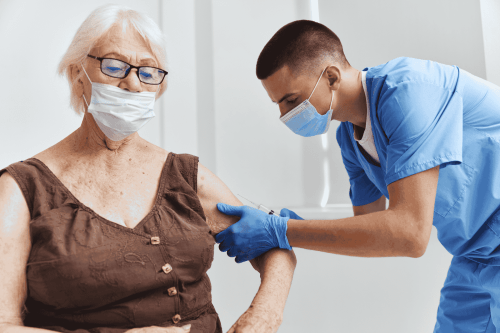Clinics are overwhelmed, nurses are overextended, and physicians are often racing from one patient to the next. Burnout has become a serious threat to care quality—a multicenter survey published in JAMA Health Forum found that 47% of nurses and 32% of hospital physicians report high levels of burnout. In the middle of this constant pressure, healthcare teams are searching for smarter ways to deliver quality care without increasing strain on staff. One powerful yet often overlooked solution is patient empowerment through self-administration training.
Self-administration training teaches patients how to safely manage certain parts of their own care—like giving injections, changing wound dressings, or using medical devices at home. Far from replacing professional care, it actually extends the reach of providers by helping patients become capable partners in their treatment.
When done well, self-administration training is more than just instruction. It’s a mindset shift—one that leads to better outcomes, higher patient satisfaction, and improved efficiency across healthcare settings.
What Is Self-Administration Training?
Self-administration training is the process of educating and guiding patients so they can confidently and safely perform certain medical tasks on their own. These can include:
- Self-injecting insulin or other prescribed medications
- Managing nebulizers or inhalers
- Using blood glucose monitors or blood pressure cuffs
- Catheter care
- Wound care or dressing changes
- Administering nutritional supplements via feeding tubes
- Using emergency medications like epinephrine auto-injectors
- Managing home dialysis equipment
The idea isn’t to shift responsibility away from medical teams, but to give patients control over their health beyond the clinic walls. When patients are trained properly, they become more consistent with their treatment, more engaged, and less likely to require emergency intervention due to errors or misunderstanding.
The Growing Importance of Self-Administration Training

Self-administration has moved from being a “nice idea” to an essential strategy in modern healthcare. Here’s why:
Chronic illness is on the rise
Conditions like diabetes, asthma, and heart disease require daily care and monitoring. Teaching patients to self-manage routine tasks means they can treat symptoms early, reducing hospital visits and preventing complications.
Healthcare staffing shortages
With workforce shortages affecting hospitals, clinics, and home health services, teaching patients to safely handle parts of their care reduces workload stress and frees nurses and providers to focus on complex cases.
Better patient outcomes
Patients who participate actively in their care have been shown to have better compliance, fewer medical errors, and improved health markers. Self-administration builds confidence that leads to better health habits.
Lower costs for patients and providers
Every unnecessary hospital visit or return appointment drives up cost. Teaching patients to correctly self-administer medication or dress wounds reduces avoidable readmissions and keeps costs down for everyone involved.
The Human Side: Confidence, Independence, and Dignity
Healthcare isn’t just about treating illness—it’s about helping people live better lives. One of the biggest benefits of self-administration training is emotional.
Patients often feel scared, uncertain, or dependent on others when they face long-term treatment. Imagine a patient who has to return to the clinic every time they need help with their feeding tube, or someone living with multiple sclerosis who struggles with daily injections.
When a provider says, “You can do this—and I’ll teach you how,” something changes.
Self-administration training:
- Builds independence – Patients aren’t tied to someone else’s schedule
- Restores dignity – Especially for personal medical tasks
- Reduces fear – Knowledge replaces anxiety
- Improves follow-through – Patients stay on track when they feel capable
- Strengthens trust – Patients feel supported by their care team
The Provider’s Advantage
While empowering patients is reason enough, self-administration training also helps providers and healthcare organizations.
| Benefit | Impact |
| More efficient use of staff | Nurses spend more time on skilled tasks, less on routine care |
| Better patient adherence | Reduces complications and follow-up calls |
| Fewer emergency visits | Patients manage symptoms earlier |
| Stronger care continuity | Simplifies long-term treatment plans |
| Higher patient satisfaction | Patients feel included and supported |
Self-administration isn’t just convenient—it’s a strategic tool for better care delivery.
When Is Self-Administration Appropriate?
Not every patient or medical treatment is a good fit for self-administration. Providers must evaluate each case carefully. Ideal candidates often:
- Are motivated to participate in their care
- Show reasonable physical ability to perform the task
- Understand instructions or have support from a caregiver
- Can demonstrate safe technique with guidance
On the other hand, self-administration is not appropriate when:
- Patients cannot follow instructions due to memory or cognitive issues
- There is no safe home environment
- The treatment requires precise professional handling
- The risk of improper administration is too high
Careful screening ensures safety and success.
How to Build a Strong Self-Administration Training Program
Whether in hospitals, clinics, assisted living, or home care, providers can develop structured training that works. Here’s a simple roadmap:
Step 1: Keep it simple
Break instruction into small, clear steps. Avoid medical jargon.
Step 2: Show, don’t just tell
Use demonstrations, models, and visual guides.
Step 3: Let patients practice
Hands-on learning builds confidence. Have patients repeat the task under supervision.
Step 4: Teach safety and hygiene
Review medication storage, needle disposal, and infection control.
Step 5: Provide take-home guides
Checklists, easy instruction cards, or videos reinforce learning.
Step 6: Confirm understanding
Use the “teach-back” method—have patients demonstrate or explain the process back to you.
Step 7: Follow up
Schedule follow-ups to check progress and answer questions.
Overcoming Common Challenges
Self-administration training isn’t always smooth, and providers often face predictable hurdles:
Fear and hesitation
Solution: Start slow, be encouraging, and normalize their feelings.
Low health literacy
Solution: Use pictures, models, and simple language.
Cultural beliefs
Solution: Ask about family or cultural expectations. Include family if appropriate.
Physical limitations
Solution: Offer adaptive tools, like easy-grip syringes or auto-injectors.
Anxiety about making mistakes
Solution: Provide clear emergency steps and reassure them that help is always available.
Real-Life Success Example

Take Maria, a 52-year-old diabetic patient. At first, she relied on twice-weekly nurse visits to help manage her insulin injections. She felt dependent and worried she might “mess up.” After structured self-administration training:
- She learned how to prepare and inject insulin on her own
- Her blood sugar levels became more stable
- She stopped missing doses due to schedule conflicts
- She avoided two potential ER visits due to early intervention
- Her confidence soared—and so did her quality of life
This is the power of self-administration.
The Future of Self-Administration Training
Healthcare is evolving, and patient education is now central to care. More organizations are incorporating:
- Telehealth coaching
- Remote monitoring tools
- Online video libraries for refresher training
- Self-administration training modules
- Virtual nurses and educators to reinforce skills
As healthcare shifts toward prevention and patient engagement, self-administration will continue to grow.
Final Thoughts
Self-administration training doesn’t just put needles or devices into patients’ hands—it gives them ownership of their health. It builds confidence, reduces hospital visits, saves time, and strengthens the provider–patient relationship. Helping patients help themselves is one of the most powerful ways to improve healthcare. It’s safe. It’s smart. And most important—it works.
When patients are trusted, educated, and supported, they don’t just follow care plans—they live them.
Take the Next Step
Empowering patients starts with education that reinforces safety, builds confidence, and supports compliance. With the right training, healthcare teams can:
- Ensure compliance by standardizing patient education and reducing errors
- Boost efficiency by reducing unnecessary visits and freeing up clinical staff
- Foster trust by building stronger relationships between providers and patients
If your organization is ready to deliver consistent, high-quality patient education at scale, we can help. Enroll your team in our FREE customized course development program and start building training modules tailored to your care protocols—at no cost. Partner with us and strengthen your patient care strategy today. Click here to get started.



